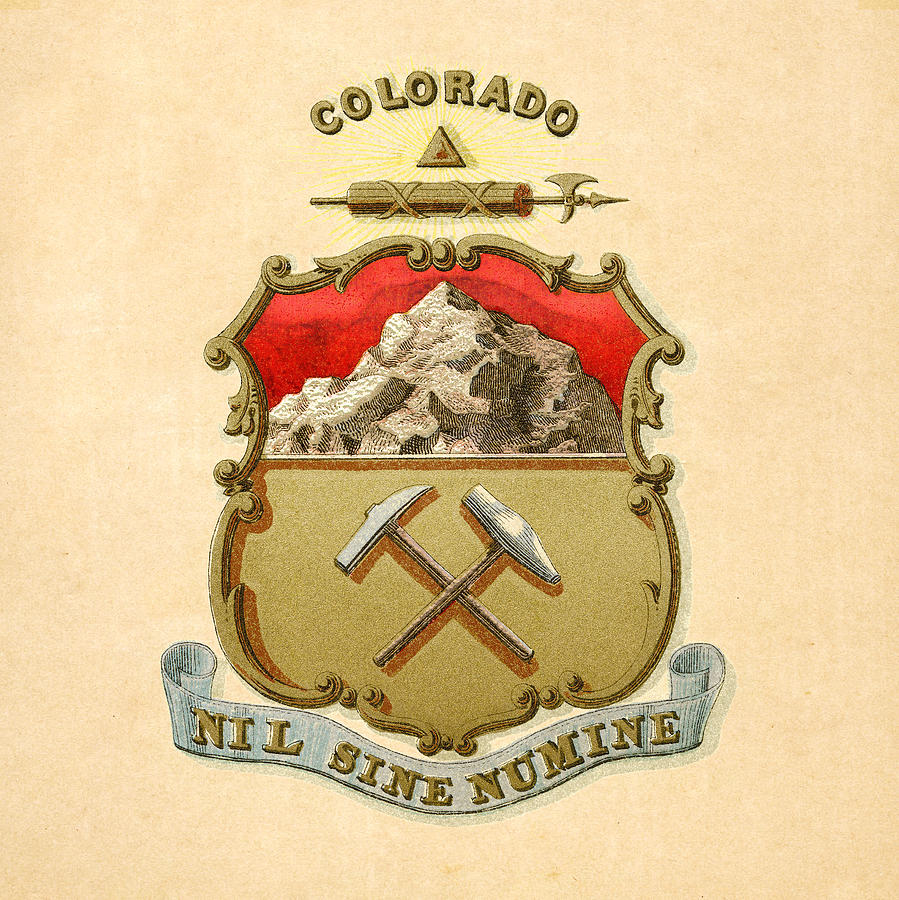
Colorado Historical Coat of Arms circa 1876

by Serge Averbukh
Title
Colorado Historical Coat of Arms circa 1876
Artist
Serge Averbukh
Medium
Digital Art - Digital Painting
Description
Introducing “Vintage Americana” collection by Serge Averbukh, showcasing meticulous digital reproductions of Americana paintings, murals and illustrations, digitally enhanced and transformed into large format prints, stylized to preserve vintage look and feel of various mediums. Here you will find framed and wrapped/stretched canvas prints featuring digitally restored reproduction of the Colorado Historical Coat of Arms circa 1876 originally illustrated by Henry Mitchell.
Historical coats of arms of the U.S. states date back to the admission of the first states to the Union. Despite the widely accepted practice of determining early statehood from the date ofratification of the United States Constitution, many of the original colonies referred to themselves as states shortly after the Declaration of Independence was signed on 4 July 1776. Committees of political leaders and intellectuals were established by state legislatures to research and propose a seal and coat of arms. Many of these members were signers of the Articles of Confederation, Declaration of Independence, and United States Constitution. Several of the earliest adopted state coats of arms and seals were similar or identical to their colonial counterparts.
State Arms of the Union, illustrated by Henry Mitchell and published by Louis Prang (known as the father of the lithographic industry), offers historically accurate renderings of the state's coats of arms as they existed in 1876. An accomplished engraver with the Bureau of Engraving and Printing for 40 years, Mitchell was responsible for engraving several coats of arms for official state use as well as arms for well-known educational and philanthropic organizations.
Colorado is a U.S. state encompassing most of the Southern Rocky Mountains as well as the northeastern portion of the Colorado Plateau and the western edge of the Great Plains. Colorado is part of the Western United States, the Southwestern United States, and the Mountain States. Colorado is the 8th most extensive and the 22nd most populous of the 50 United States. The United States Census Bureau estimates that the population of Colorado was 5,355,866 on July 1, 2014, an increase of 6.50% since the 2010 United States Census.
The state was named for the Colorado River, which Spanish travelers named the Río Colorado for the ruddy (Spanish: colorado) silt the river carried from the mountains. The Territory of Colorado was organized on February 28, 1861, and on August 1, 1876, U.S. President Ulysses S. Grant signed a proclamation admitting Colorado to the Union as the 38th state. Colorado is nicknamed the "Centennial State" because it became a state 28 days after the centennial of the United States Declaration of Independence.
Colorado is bordered by Wyoming to the north, Nebraska to the northeast, Kansas to the east, Oklahoma to the southeast, New Mexico to the south, Utah to the west, and Arizona to the southwest, at the Four Corners. Colorado is noted for its vivid landscape of mountains, forests, high plains, mesas, canyons, plateaus, rivers, and desert lands.
Denver is the capital and the most populous city of Colorado. Residents of the state are properly known as "Coloradans", although the archaic term "Coloradoan" is still in use.
Uploaded
September 12th, 2015
Embed
Share
Comments
There are no comments for Colorado Historical Coat of Arms circa 1876. Click here to post the first comment.
























































